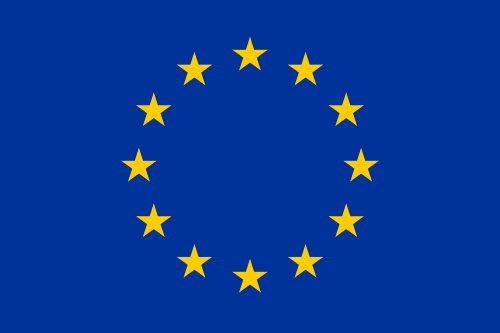In this podcast, Daniella McGuigan (partner, London) and Jim McGrew (Chief Client Services Officer, New Orleans) discuss the European Union’s (EU) pay transparency directive and its implications for employers. Daniella provides an overview of the directive, emphasizing its aim to enforce equal pay for equal work or work of equal value, and outlines the requirements and challenges employers will face in complying with this new legislation. The conversation also touches on the potential penalties for noncompliance and compares the directive to similar legislation in other parts of the world, highlighting the unique aspects of the EU’s approach. Daniella and Jim discuss some best practices for employers—such as evaluating job architecture and pay structures—as they start to prepare for the directive’s June 2026 effective date.
Understanding the EU Pay Transparency Directive: What Employers Need to Know

Transcript
Announcer: Welcome to the Ogletree Deakins Podcast, where we provide listeners with brief discussions about important workplace legal issues. Our podcasts are for informational purposes only and should not be construed as legal advice. You can subscribe through your favorite podcast service. Please consider rating this podcast so we can get your feedback and improve our programs. Please enjoy the podcast.
Jim McGrew: Hello, everyone, and welcome to the Ogletree Deakins Podcast series. I’m Jim McGrew in the firm’s New Orleans office. Today, we are going to talk about the EU Pay Transparency Directive and what it means for employers. I’m joined today by Daniella McGuigan in our London office.
Hello, Daniella, how are you?
Daniella McGuigan: Hi, Jim. I’m good, thanks. How are you?
Jim McGrew: I’m doing great. Thanks for joining us. Can you go ahead and give us a brief overview of the EU Pay Transparency Directive and its main objectives?
Daniella McGuigan: Sure. The EU Pay Transparency Directive is, without a doubt, I would say, the most significant piece of legislation coming out of the European Union in recent years. In a nutshell, its aim is to enforce equal pay for equal work or work of equal value. I’ll no doubt come on to explain that to you in a moment. But it’s all about ensuring equality of pay between men and women through enhanced pay transparency and reinforced enforcement procedures.
Jim McGrew: Who does the law apply to, and when exactly does it become effective?
Daniella McGuigan: It’s going to apply to all employers, whether they’re in the private or the public sector, that have headcount in any of the 27 European countries. It’s going to apply across the board regardless of headcount numbers. The deadline for implementation for each European member state is the 7th of June 2026, so the clock is ticking.
Jim McGrew: Got it. Employers, they’ll have about a year to prepare for this new law?
Daniella McGuigan: That’s right, just under a year. We’re under that 12-month barrier now. Yeah, time is of the essence.
Jim McGrew: Daniella, to be clear, you mentioned headcount in any of those 27 countries. I take it that means that it applies to any employer, even if they are based or headquartered somewhere else, as long as they have employees in one of those countries?
Daniella McGuigan: That’s right, yeah. Absolutely right.
Jim McGrew: Okay, it’s important to know the requirement. Okay, let’s dive into the requirements of the law a little bit. The directive emphasizes equal pay for equal work or work of equal value, as you just mentioned. Can you explain what this means?
Daniella McGuigan: Yeah, sure. This is actually probably the most significant element of the piece of legislation that employers really need to be aware of. Equal pay for equal work, that’s more straightforward, and it’s probably something that U.S. employers, in particular, are already quite familiar with. I know in the U.S., you have the concept of similarly situated employees. Equal pay for equal work is where you have a male and a female doing work that is either identical or broadly similar. There’s an expectation that they will be paid the same.
Now, equal value is much more difficult. Equal value is where you could have two individuals doing completely different jobs, entirely different roles, but they are of equal value to each other. The concept of equal value is dependent on the organization. Each organization may put a different value on certain jobs depending on what sector you’re in, but it’s a really, really complex area.
Jim McGrew: Yeah, that sounds like a potentially tough requirement for employers to meet. How are employers supposed to determine work of equal value? What obligations do employers have to make that determination?
Daniella McGuigan: Yeah. The directive leaves it up to each member state to give guidance to employers on what equal value might mean. However, it has set out some parameters to help employers with that process. I should say that when we’re talking about equal value, what we’re really looking at is job evaluation. In my experience, job evaluation is an art, not a science. There are some very experienced job evaluation experts out there who—this is what they do—looking at job architecture and determining whether jobs are of equal value. That said, I’ve dealt with years, and years, and years of National Health Service litigation around the concept of equal value. I was actually involved in a lot of test cases that set down some of the principles. It is a complicated area.
But just to give you a feel for what the directive says about what equal value might look like, it says that “employers need to assess jobs, comparing them on objective criteria, which when they’re comparing two roles, should include elements such as educational requirements, professional and training requirements, the skills required to do the job, the effort required to do the job, the responsibility of the job holder, and the working conditions.” From that, what you’re going to need to have to do is take a job profile and almost score it against those criteria. There’s a lot of administrative work that needs to go into each organization to assess job architecture and to determine where jobs may be of equal value to each other.
Jim McGrew: That’s a lot of work that employers are going to have to engage in. You mentioned that each of the 27 countries has the opportunity to define work of equal value. Do you anticipate that they will vary greatly? If I’m an employer and I have employees, say, in 15 EU countries, is it possible that I’ll have requirements that will vary greatly from country to country?
Daniella McGuigan: It is possible. That’s where it’s really, really difficult for employers to get ready. We mentioned before, we’re down to less than 12 months now before implementation. Here we are, there’s only about five countries that have made noises about how they intend to implement the directive. Even then, they haven’t said that much. What we’re left with is what the directive says, so we can work with that, but there’s absolutely nothing to stop each member state building on what the directive says to go further.
A member state can’t do less than the directive, but they can do more. We know the minimum requirements of the directive. As you quite rightly point out, it could be the case that each of the 27 countries comes up with their own version of what equal value should look like.
Jim McGrew: What do employers do if they do this analysis, and they find that there is a pay disparity that meets the requirements of the law? In other words, they do find that they have a pay disparity between jobs that are equal work or jobs that are work of equal value.
Daniella McGuigan: Okay. It’s important to understand that the directive is actually split into two parts. The first part is all about pay transparency. That’s where there’ll be a pre-employment and a during-employment element of pay transparency whereby employees or candidates will be able to access more information about pay and how pay is set than they’ve ever done before.
If I just break that down, Jim, it’ll help me explain to you what the outcome is in terms of the reporting requirements. If we look at the pay transparency bit first, pre-employment, job candidates will have the right to have information about the initial pay or its pay range for the job that they’re applying for. That information is going to need to be either provided in the job vacancy notice or in any other method before the interview. The directive just says they’ve got to have it before the interview. Employers will also not be able to ask any questions of any candidate about their prior salary history information. That’s the pre-employment bit.
The during employment bit, which incorporates this element of equal value, is that existing employees will have the right to request information about their own individual pay level, but also the average pay level broken down by sex for categories of workers that are performing either exactly the same work as them, which is the equal work piece that we mentioned before, or work of equal value. Employers are going to have to make that information accessible to them. They have to request it in writing, and an employer has to give them that information within two months. It doesn’t give employers long to provide that information if they haven’t already got their house in order. That’s the pay transparency bit.
The gender pay gap piece is separate. I think that’s what you’re referring to, Jim, when you mentioned what the consequences are if there’s a pay disparity when an organization goes through this analysis. The gender pay gap piece is where you’ve got to work out the gender pay gap between men and women performing either the same job, i.e., equal work, or work of equal value. Now, if you find that there is a pay gap of 5% or more within a particular category of workers and it cannot be objectively justified, you’ve got six months to fix it. That’s not very long if you’ve discovered a significant pay gap. To your point, if an employer discovers that they’ve got more than 5% pay gap, they have got six months to fix it.
Jim McGrew: Well, Daniella, that sounds fairly complicated, and it sounds like it’s something we could talk about a lot. Maybe we could have further additional podcasts to discuss various elements of this. Let me ask you this: What are the penalties employers can face for noncompliance, and when do they attach exactly?
Daniella McGuigan: Okay. If an employer has discovered a 5% or more pay gap, if they’re an employer that has to do gender pay gap reporting, and they cannot objectively justify it, they must carry out a joint pay assessment in cooperation with the workers’ representatives as applicable. Basically, Jim, a joint pay assessment is a really, really detailed involuntary equal pay audit, and it applies to the whole workforce, not just where the pay gap has been identified.
In addition to the joint pay assessment, the nature of the remedies and penalties will really be established at the member state level. The directive hasn’t set out what the penalties should be other than to say each country may include fines, compensation including recovery of back in the underpayment of wages, payments in kind, lost opportunities to progress, and interest on any arrears of pay. It’ll be up to each member state to state what the penalties should be.
I should say that the gender pay gap reporting element of the directive is headcount-dependent. That only attaches to employers that have 100 or more employees. It’s a staged approach. Employers with 150 or more employees must report from 2027, and employers with 100 or more employees from 2031. It’s the pay transparency piece that attaches to all employees regardless of headcount. As I mentioned, the pay transparency piece still has that concept of equal value. It’s the right to request information about not only your own individual pay and those doing the same work as you, but also people that are doing work of equal value to you. There’s no getting away from that concept of equal value. Employers have got to address it. But if they’ve got 100 or more employees, they have the additional requirement of gender pay gap reporting.
I should also caveat that, Jim, what I’ve said before. That that’s what the directive said. There’s nothing that stops each member state saying, “I know the directive says 100 or more employees for gender pay gap reporting, but actually we want to go further than that and we’re going to introduce it at 10 employees.” There’s nothing at all to stop a member state from doing that. It is very much watch this space in that regard.
Jim McGrew: How do employers get prepared for the effective date of this law without getting the guidance from the 27 countries? When are those are expected?
Daniella McGuigan: Yeah. At the moment, what we’re doing is we’re tracking it. We’ve actually set up an EU Pay Transparency Directive Implementation Tracker, catchily named. That is available to all our clients on our website. You can go in there, click on it, and then click on a country. That will tell you exactly where each of those 27 member states are up to with the implementation of the directive. I highly recommend people checking that out if they’re not aware of it already.
But in terms of getting ready, it really is this job evaluation piece. What I would recommend employers consider is firstly, what’s your headcount in all of the member states? So you can feel confident about are we only going to be impacted by the pay transparency element, or are we one of the employers that’s going to be hit with the additional gender pay gap reporting requirement as well. That’s the first step, look at your headcount and where each of your various employees are located across the European Union.
Then you need to look at your job architecture. What sort of job architecture have you got in place? How do you determine where people fall within your pay structure? Do you have a grading system? Do you have job leveling? Is it underpinned by a process of job evaluation? I.e. does someone go through a rigorous, objective process of determining what roles do, what the requirements of roles are, the skills of roles? Those elements that I mentioned before that the directive has said should be considered when looking at what is involved in each individual role. And have they been scored? Has there been any element of comparison? Both vertically, which is people doing the similar job, but also horizontally, where it’s people doing completely different jobs and you’re undertaking that comparison.
If there are concerns that actually, your job grading system or your job architecture might not be robust enough, now is the time to get expertise to have a look at that and say, “Would this stand up to the requirements of the directive? Does our job architecture go far enough if we actually look at what the directive says it needs to do versus what we have in place?” If there’s any disparity between the two, try and fill those gaps and try and ensure that you’re compliant. That’s probably the biggest piece of work that needs to be undertaken from an administrative point of view.
Then secondary to that, if you are one of those organizations who has 100 or more employees in a particular member state, then you know you’re going to have this requirement to report on the gender pay gap. You’re going to have to categorize your workers, both doing equal work and work of equal value. Then I would recommend doing a dry run of the gender pay gap analysis under attorney-client privilege. Just do a dry run and see what it looks like. If you have areas where there’s a pay gap of 5% or more, now is the time to be looking at that, scrutinizing that, having a look at what’s driving that pay gap. Can we objectively justify it or does it need further investigation? I would be doing that now.
Jim McGrew: Thank you, Daniella. It sounds like a lot of work and a lot for employers to think about. Let me ask you this before we close. How does the EU Pay Transparency Directive compare to similar legislation in other parts of the world, such as the United States?
Daniella McGuigan: I think the pay transparency piece, that’s a term that the U.S. are very familiar with. I think you’ve actually had pay transparency legislation in a number of states for quite some time. To a certain extent, the pay transparency piece is nothing new, but what is different is this concept of equal value. It tends to be similarly situated employees or just job posting information, salary ranges posted on job adverts. I think the requirement to not only provide this information for roles, but then also to give existing employees more transparent information about their own role, pay progression, and also that of others doing roles of equal value. That’s completely different. I think that is a new concept.
The gender pay gap reporting piece, again, there’s some countries that have been reporting on gender pay gaps for some time. The UK, for example, even though it’s not caught by the directive, but that’s been reporting on gender pay gap since 2017. The concept’s nothing new, but it’s never been to this level of scrutiny whereby jobs are grouped not only doing the same equal work, but also work of equal value. It does go much further in my view than anything we’ve seen before.
Jim McGrew: Yeah, it’s very, very interesting. Thank you, Daniella, for this discussion about this important new law that’s going to be in effect next year. We will be covering a lot more about this law I’m sure between now and June 2026. In the meantime, thank you for joining us. Thank you, Daniella, for your discussion, greatly appreciate it. We’ll be talking again. Until next time, please join our future podcasts here at the Ogletree Deakins podcast series. Thanks again, Daniella. So long.
Daniella McGuigan: Thanks, Jim.
Announcer: Thank you for joining us on the Ogletree Deakins podcast. You can subscribe to our podcast on Apple Podcasts or through your favorite podcast service. Please consider rating and reviewing so that we may continue to provide the content that covers your needs. And remember, the information in this podcast is for informational purposes only and is not to be construed as legal advice.
Speakers

Workforce Analytics and Compliance
Ogletree Deakins’ Workforce Analytics and Compliance Practice Group provides tailored guidance and legal recommendations for a myriad of workforce issues, informed by data-driven, state-of-the-art compliance and risk assessment services. Our services encompass all stages of the employment life cycle, such as selections, career advancement, compensation and benefits, and retention, which enables employers to make informed decisions […]

Pay Equity
Recent high-profile lawsuits and increased activity from state legislatures have thrust pay equity issues to the forefront for today’s employers. As the momentum of legislation, regulation, and corporate initiatives focused on identifying and correcting pay disparities continues to grow, our attorneys are ready to assist with the full spectrum of pay equity-related issues.

Cross-Border
Often, a company’s employment issues are not isolated to one state, country, or region of the world. Our Cross-Border Practice Group helps clients with matters worldwide—whether involving a single non-U.S. jurisdiction or dozens.




